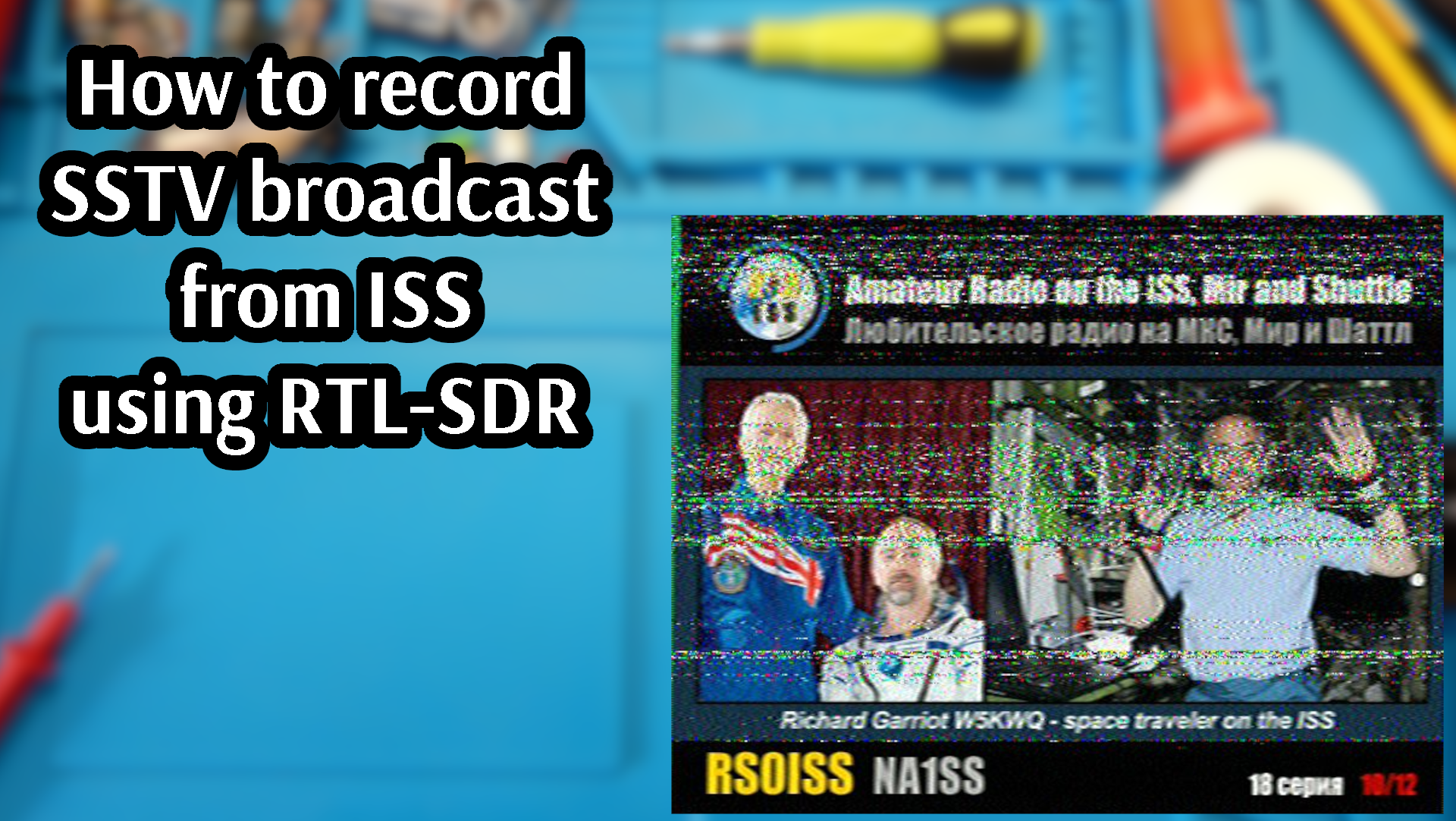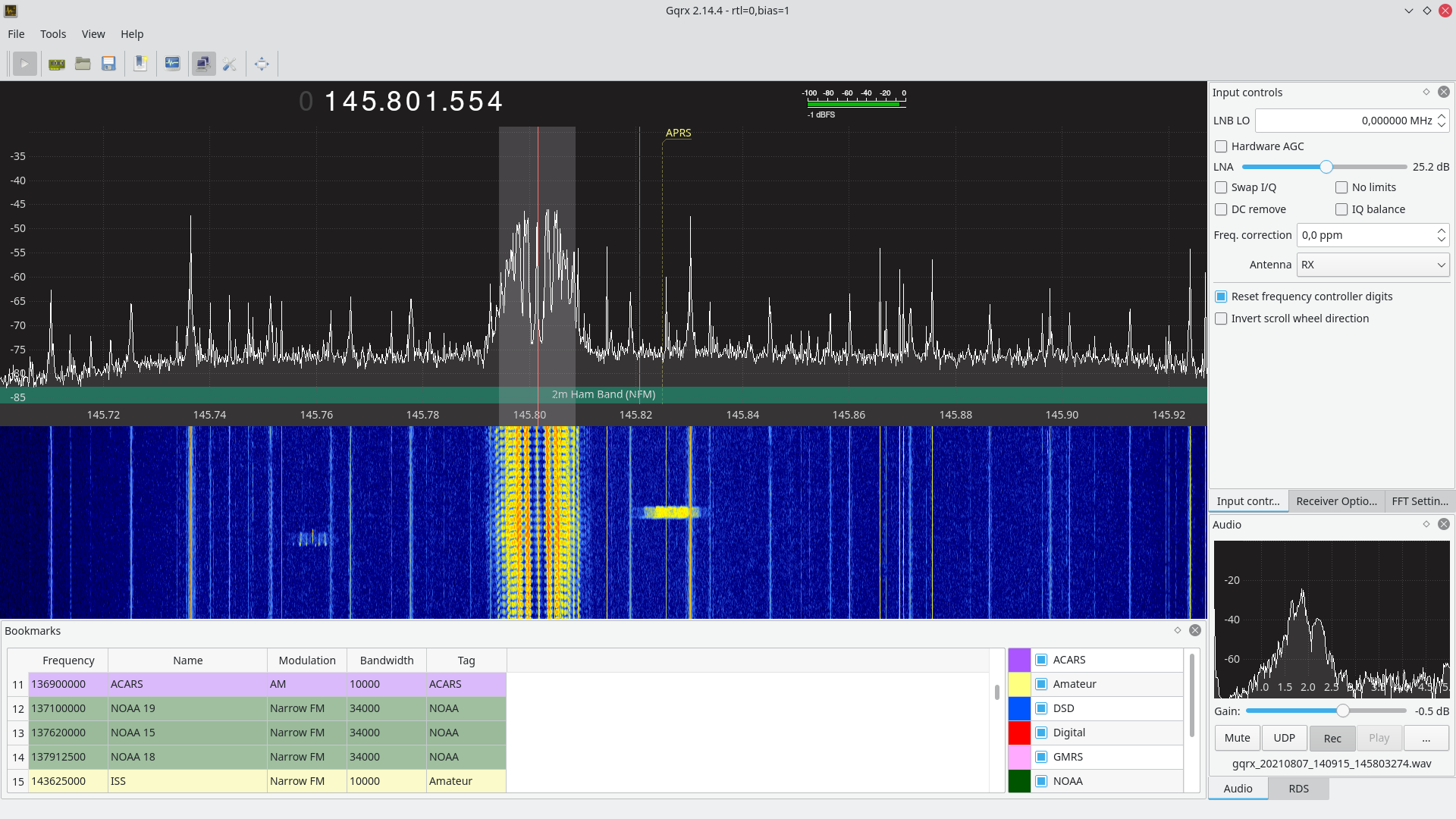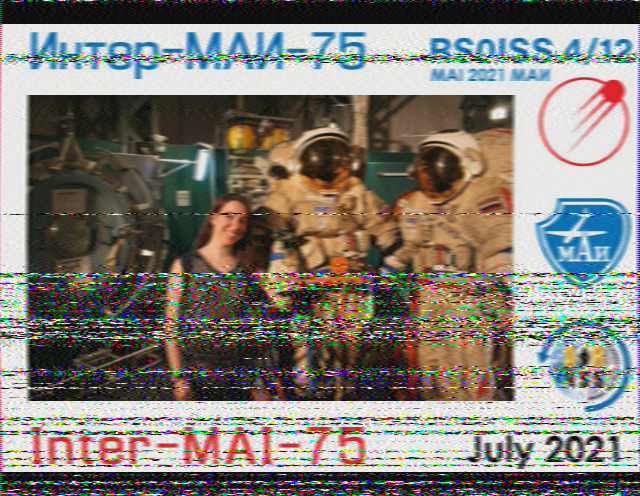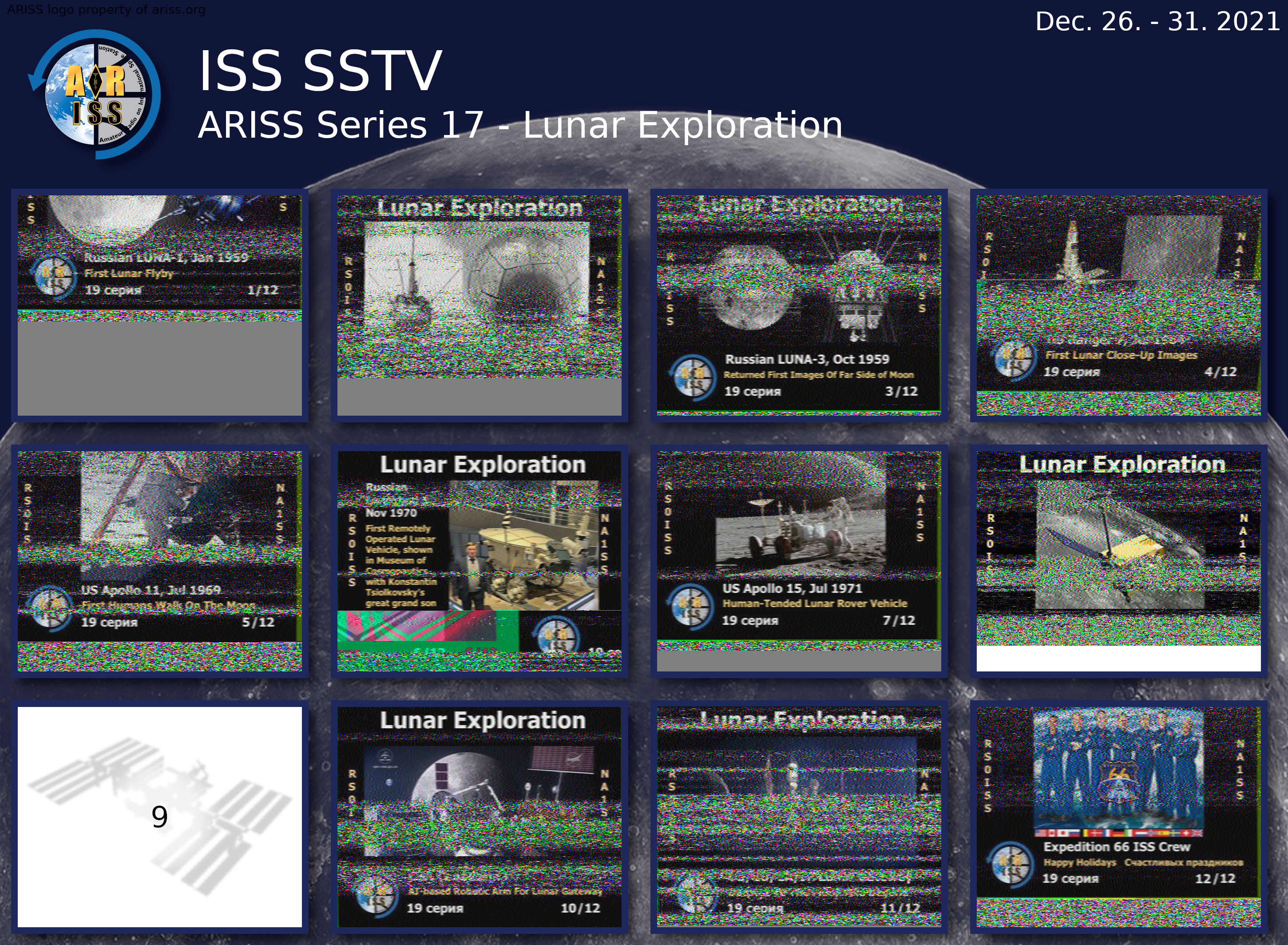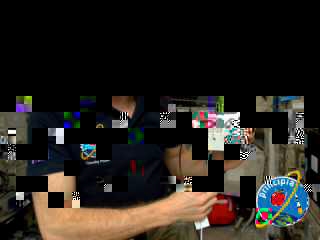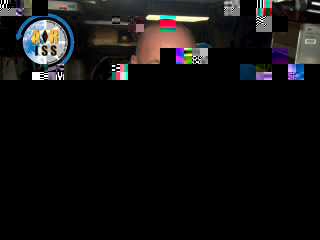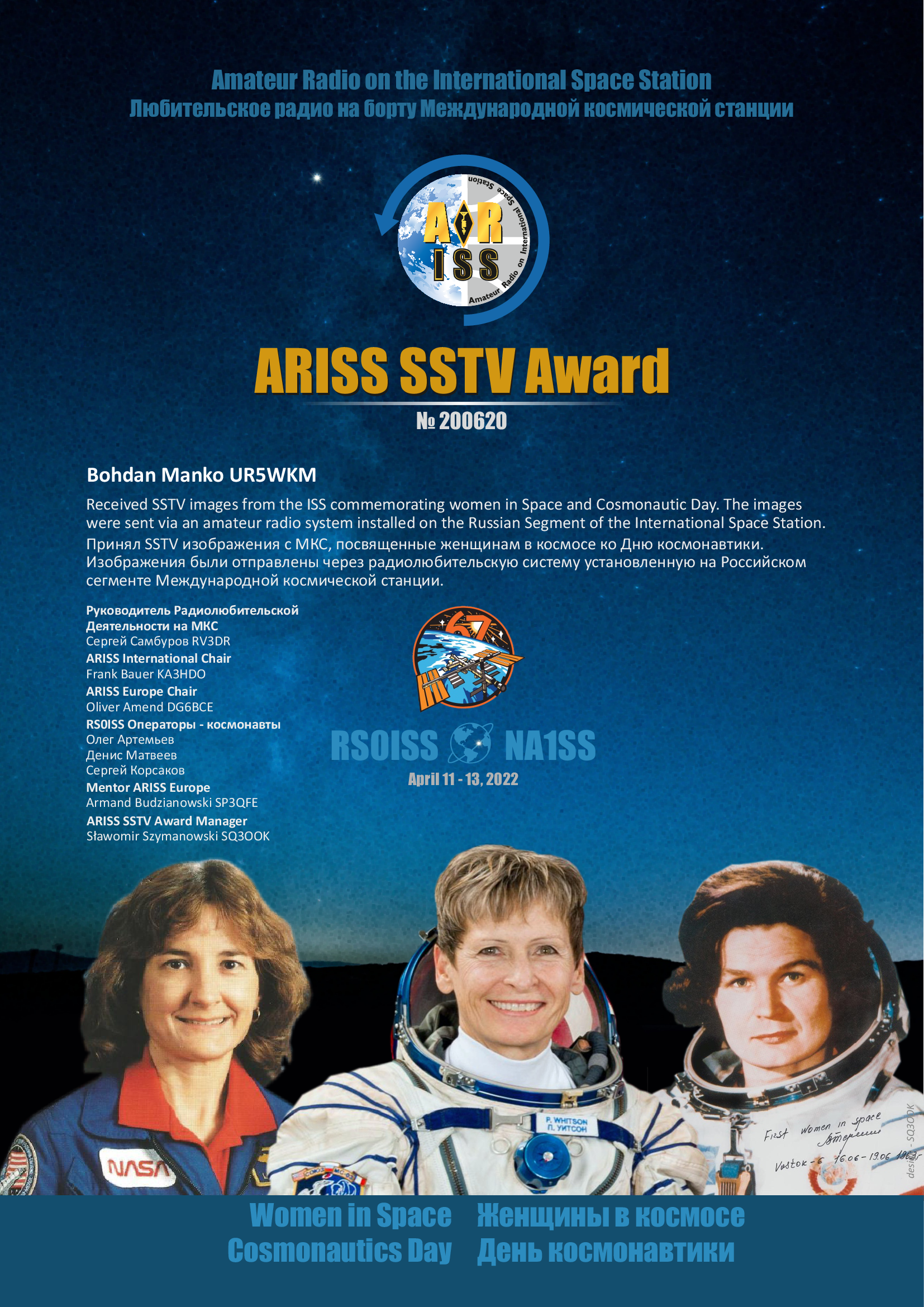Last updated on 14/04/2022
While scrolling through Reddit, I noticed a post about SSTV picture recorded from the International Space Station. By checking capabilities of RTL-SDR receivers, SSTV receiving could be found in that list, because this receiver has enough possibilities for obtaining such “television”. But SSTV broadcast from the International Space Station is not available anytime, so to try this, it’s needed to wait for the announcement. June 14 was such announcement about broadcast starting 21 till 26 June 2021. Great chance to try!
Slow Scan Television
Slow Scan Television (SSTV) – method of transmitting images in amateur radio communication using a narrow-width channel. Classic analog TV uses channel with bandwidth of 6 MHz, but SSTV needs only 3-5 kHz! This key characteristic allows receiving a signal on a regular walkie-talkie or RTL-SDR receiver. And despite the fact that the technology contains the word “television” in its name, the speed of obtaining one frame is quite low, for example, one frame of SSTV from the ISS is transmitted in almost two minutes!
Well, lets plan a record!
International Space Station flies over my city of Lviv several times in the morning. I got exact time from the Gpredict application. In my case, the perfect pass was at 9 am, so I prepared the equipment evening before and set the alarm so I will not oversleep.
In the morning turned on recording in the GQRX. This is free software for SDR, especially on Linux systems. For recording I will use an RTL-SDR receiver with LNA and FM-radio filter, and a dipole antenna with a leg length of 49 cm.
Recording
A minute after the appearance of the ISS over the horizon, the broadcast begins. The signal was quite strong and stable. This is due to the fact that my window face west, and the ISS flew clearly from west to east.
In this first recording, I forgot about the Doppler effect on signals from transmitters of moving satellites, so I adjusted the frequency manually, although it was best to turn on Gpredict redio control – it works great with GQRX.
In two minutes signal ended, so I tested it in QSSTV. This is open-source software for decoding SSTV. And the result was pretty good. The next pass of ISS will be in one hour.
Before this pass, I configured Gpredict for radio control. And then started recording.
Signal decoding
Recorded audio could be decoded on both Linux (using QSSTV) and Windows systems.
On Linux-based systems, first you must create a null-sink audio device:
$ pactl load-module module-null-sink sink_name=virtual-cableThen play record with any audio player to this null-sink audio device, while in QSSTV enable “listening” of that device. As soon as QSSTV started “listening”, a waterfall will appear on the right side, and as soon as application recognizes signal, it will start generating image.
For Windows operating system there is free application called MMSSTV. Workflow here is similar to workflow with QSSTV. First, you must install virtual audio cable driver. Then play record to virtual cable device, run MMSSTV and wait for decoded image.
Results
I really like results and this short but interesting experience.
Update [07.08.2021]
On August 6-7 2021, another SSTV broadcast from the ISS took place, and I managed to get even better results on the same equipment, directly from the apartment:
Update [29.12.2021]
On December 26-31, 2021, taking place SSTV broadcast dedicated to the 66th expedition – ARISS Series 19 Lunar Exploration. This time all flights of the International Space Station over Ukraine are night, therefore the signal quality while recording from the apartment is much worse. In particular, I think LED lights and other switching power supplies make a lot of noise. But yet managed to make some successful shots.
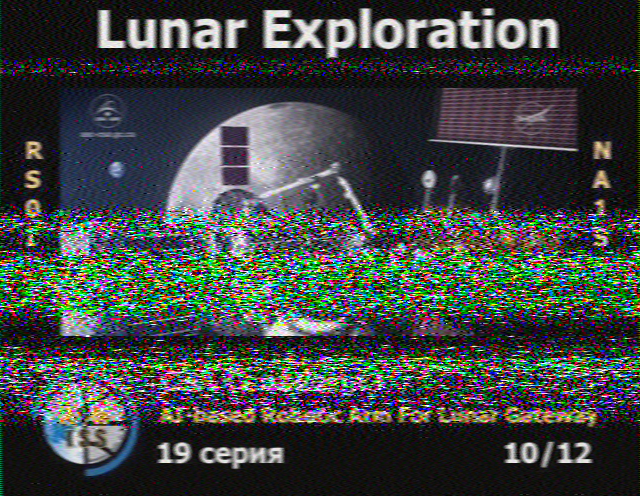
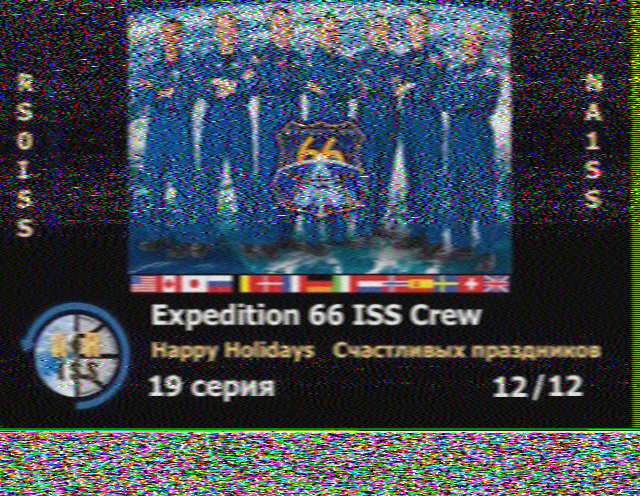
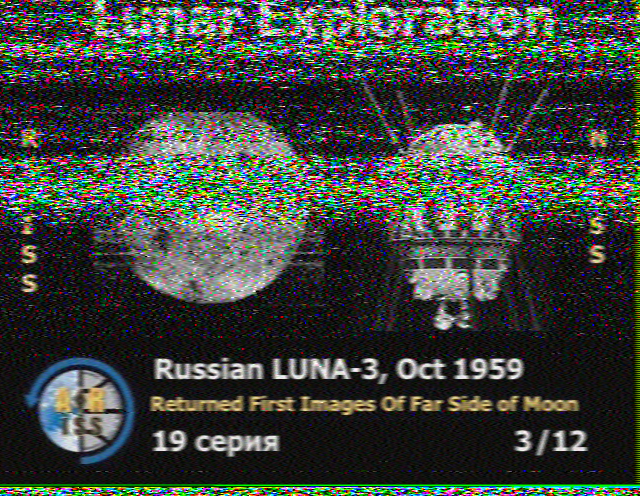
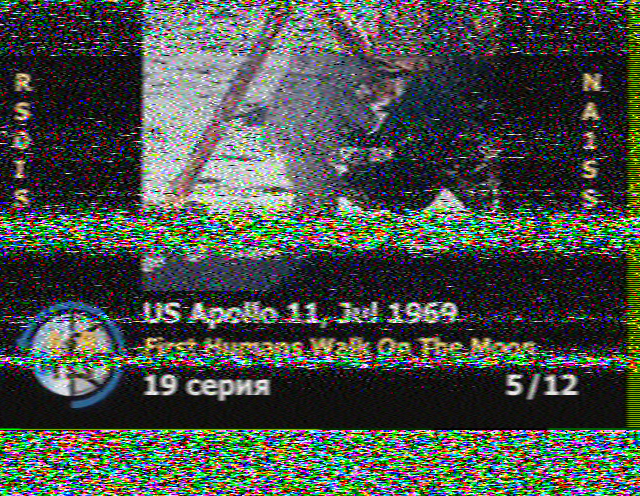

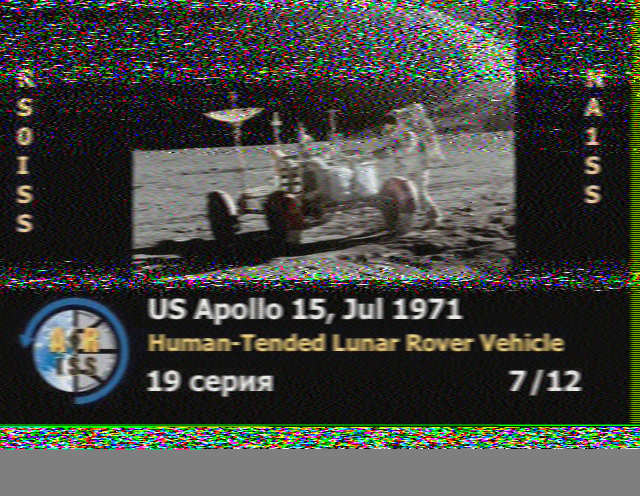
Update [31.12.2021]
During SSTV broadcast from the International Space Station, a certain number of images are transmitted, and collecting them is like an achievement. This time I managed to record 11 of the 12 images, some not completely, most of them with noise, but there was a lot of excitement and fun. Also, after getting a successful recording of one or more images, ARISS volunteers issue diplomas for participation in the event, I received one as well.
Update [20.02.2022]
On February 20, 2022, an experiment of digital SSTV broadcasting with KG-STV modulation was conducted at ISS. Purpose of this special event was to test new types of modulations to promote amateur radio and, in particular, SSTV. Broadcast was not on the usual frequency of SSTV within 2-meter band – 145,800 MHz, but at 70-centimeter band – 437,800 MHz, also involving a transponder of the ISS repeater. I tried to record the signal twice, first time indoors from the apartment, but the signal was right at noise level. Second recording was made on the rooftop, so I managed to record two images. Broadcast of the first image was already underway, so I received only the second half of it. Also second broadcast was interrupted by discharged laptop during this windy frosty weather on the rooftop. So this record is incomplete as well. Anyway, the experiment was interesting. Here is my recordings:
Update [14.04.2022]
Another SSTV broadcast event took place on April 11-13, 2022, and was dedicated to Cosmonautics Day and Women in Space. The flights were daytime, but only part of the flight from west to east, that I can record indoors, mostly had broadcast pauses. So it wasn’t possible to record any full picture, although what was recorded was quite clear.


